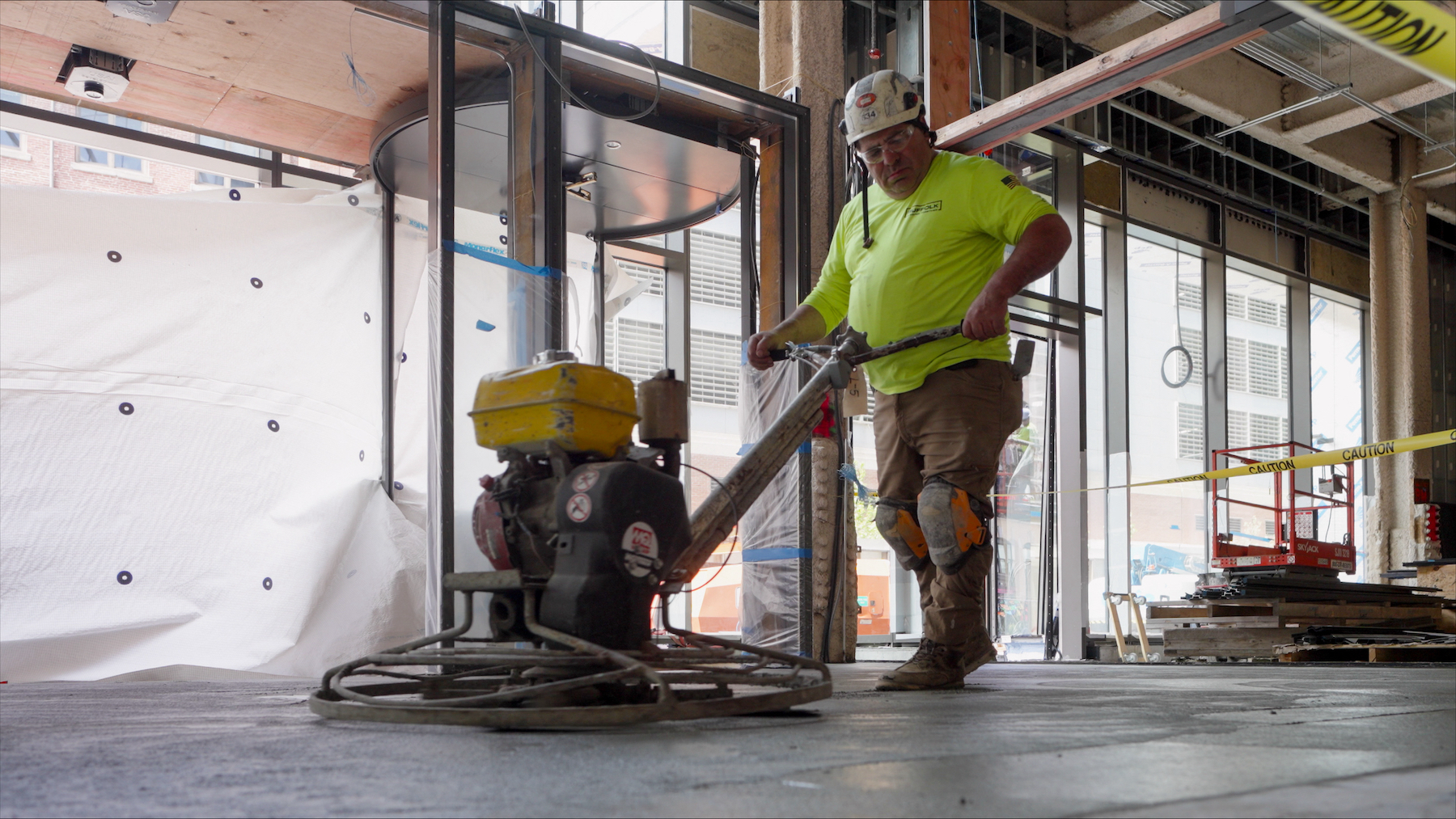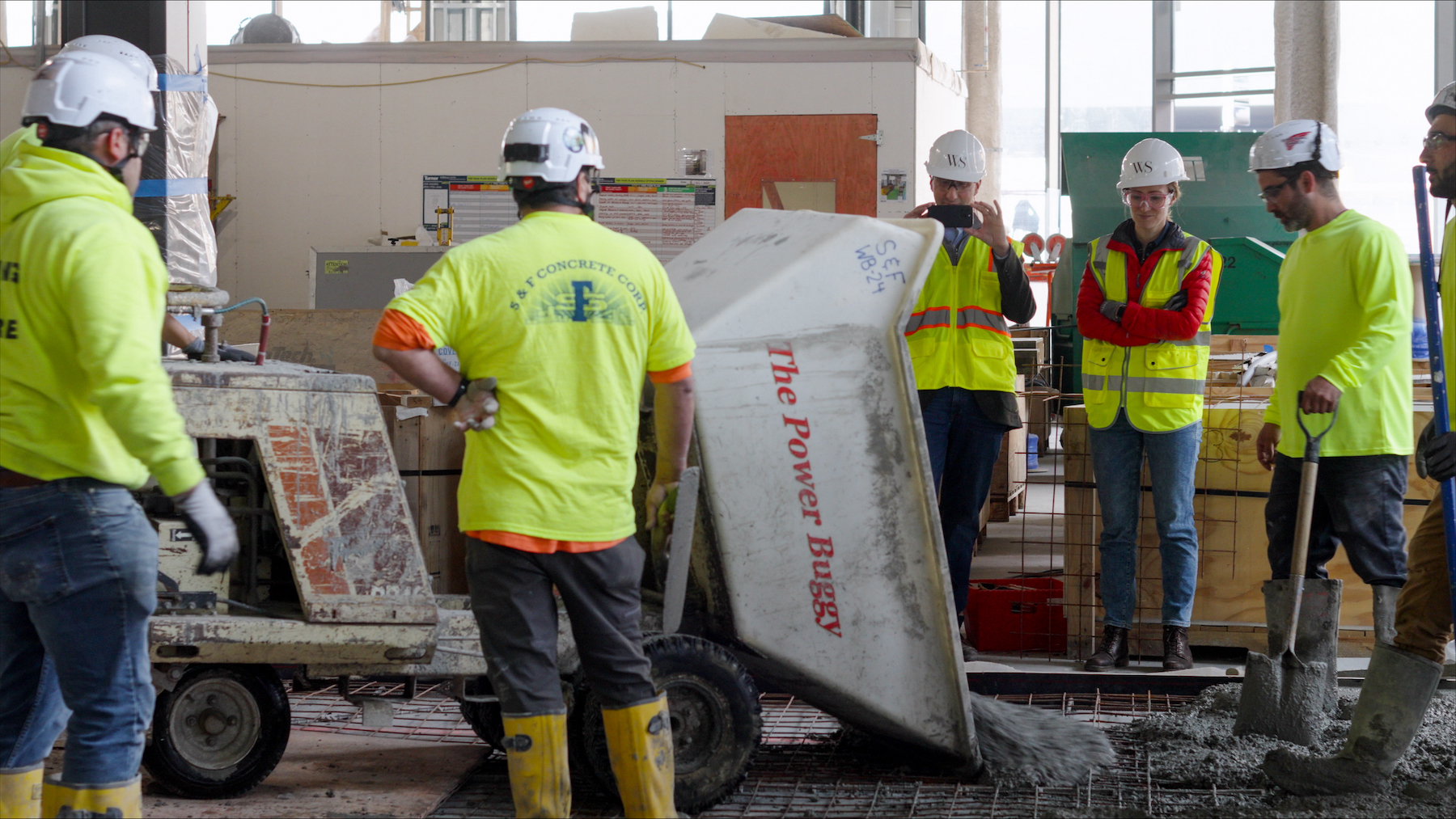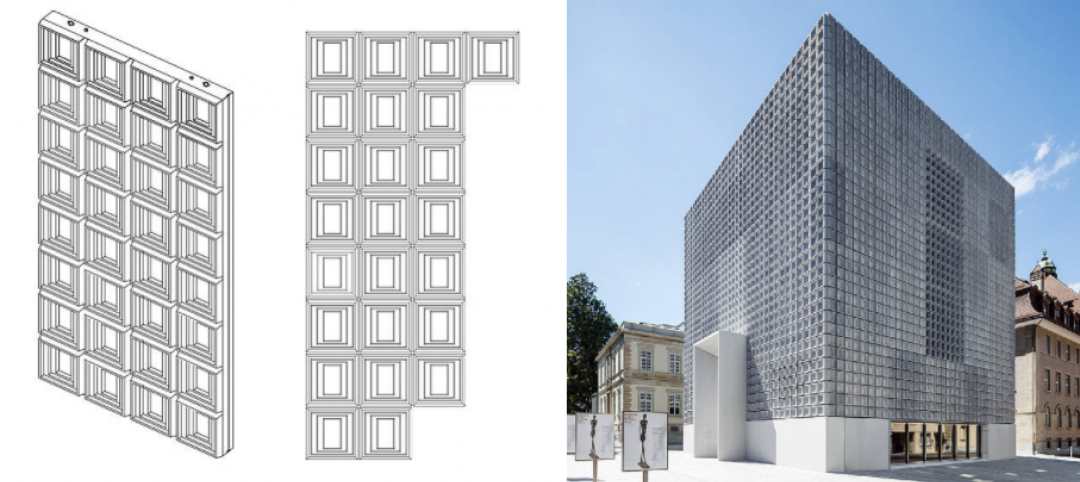Earlier this month, a 575-sf patch of concrete was poured as part of a public space known as the Paseo, inside One Boston Wharf Road, a 707,000-sf 17-story building in Boston’s Seaport district that is scheduled for completion later this year. Amazon will be the building’s sole tenant.
What makes this newsworthy, you ask? Well, for one thing, One Boston Wharf Road, developed by WS Development, will be Beantown’s largest Net Zero Carbon office building. Its goal is to reduce greenhouse gas emissions by more than 90 percent below code requirements and eliminate 5.1 million pounds of CO2 annually. (WS Development recently announced that it had purchased renewably generated electricity for all electric power used by its Seaport portfolio.)
Also see: AGC releases decarbonization playbook to help assess, track, reduce GHG emissions
The concrete installation represents the first commercial application of low-carbon cement manufactured by Sublime Systems, a business that the Massachusetts Institute of Technology spun out as an enterprise in 2010.
Production of cement currently accounts for 8 percent of global CO2 emissions, mostly caused by the intense temperatures required to make cement clinker from limestone, a common ingredient in concrete. Sublime Systems, which is based in Somerville, Mass., claims that its Sublime Cement, the product's marketing name, avoids traditional cement’s major emissions sources, limestone feedstock and fossil-fueled kilns, by applying electrochemistry to extract cementitious ingredients from non-carbonate materials, without degrading the properties that make concrete the most-used building material worldwide.
Sublime Systems’ technology makes ASTM C1157-compliant cement, a drop-in replacement for Portland Cement in concrete. The company, which was incorporated four years ago, has raised more than $140 million from tech investors, and cooperative agreements with several U.S. Department of Energy programs. The company’s pilot plant has a 250-ton annual production capacity, and Sublime Systems is developing a 30,000-ton capacity commercial facility that will open in Holyoke, Mass., in early 2026.
“We and Sublime share the same vision and mission,” said Yanni Tsipis, a Senior Vice President at WS Development and a lecturer at the MIT Center for Real Estate. “We have an opportunity to showcase the most forward—thinking low-carbon building technology on the planet in the public space, at the heart of the building. This partnership epitomizes the value of technology transfer from incubator to industry.”
Educating the public about lowering carbon

The floor of the Paseo, in which Sublime Cement is installed, will be marked with educational material explaining the significance of decarbonized cement in the battle against climate change. The Paseo will lead to a new 1.5-acre park called The Rocks at Harbor Way that will be the focal point of a one-third-mile promenade that connects to the water’s edge. (James Corner Field Operations came up with this concept for Harbor Way.) One Boston Wharf Road will feature 77,000 sf of retail space.
One Boston Wharf Road is adjacent to 11 Harbor Way, a 525,000-sf, 17-story office tower that WS Development completed in the spring of 2022.
Related Stories
| Aug 11, 2010
Oldcastle Precast Building Systems wins PCI 2009 Sustainable Design Award
Oldcastle Precast Building Systems was part of the award winning team behind the affordable housing development Melrose Commons Site 5 situated in the South Bronx. PCI (Precast Concrete Institute) recently selected Melrose 5 for the “2009 PCI Design Award for Best Sustainable Project”.
| Aug 11, 2010
Concrete Solutions
About five or six years ago, officials at the University of California at Berkeley came to the conclusion that they needed to build a proper home for the university's collection of 900,000 rare Chinese, Japanese, and Korean books and materials. East Asian studies is an important curriculum at Berkeley, with more than 70 scholars teaching some 200 courses devoted to the topic, and Berkeley's pro...
| Aug 11, 2010
Precast All the Way
For years, precast concrete has been viewed as a mass-produced product with no personality or visual appeal—the vanilla of building materials. Thanks to recent technological innovations in precast molds and thin veneers, however, that image is changing. As precast—concrete building components that are poured and molded offsite—continues to develop a vibrant personality all it...
| Aug 11, 2010
AIA Course: Historic Masonry — Restoration and Renovation
Historic restoration and preservation efforts are accelerating throughout the U.S., thanks in part to available tax credits, awards programs, and green building trends. While these projects entail many different building components and systems, façade restoration—as the public face of these older structures—is a key focus. Earn 1.0 AIA learning unit by taking this free course from Building Design+Construction.
| Aug 11, 2010
Tall ICF Walls: 9 Building Tips from the Experts
Insulating concrete forms have a long history of success in low-rise buildings, but now Building Teams are specifying ICFs for mid- and high-rise structures—more than 100 feet. ICF walls can be used for tall unsupported walls (for, say, movie theaters and big-box stores) and for multistory, load-bearing walls (for hotels, multifamily residential buildings, and student residence halls).
Concrete | Aug 11, 2010
8 Innovations That Will Rock Your Next Concrete Project
If you think you've seen it all when it comes to concrete construction, then you haven't sat down with Blaine Brownell. The architect-turned-blogger-turned-author has become the industry's foremost expert in everything that is unconventional and provocative in the building products field. For the past eight years, this LEED Accredited Professional, BD+C “40 Under 40” winner, and vis...
| Aug 11, 2010
Great Solutions: Products
14. Mod Pod A Nod to Flex Biz Designed by the British firm Tate + Hindle, the OfficePOD is a flexible office space that can be installed, well, just about anywhere, indoors or out. The self-contained modular units measure about seven feet square and are designed to serve as dedicated space for employees who work from home or other remote locations.









